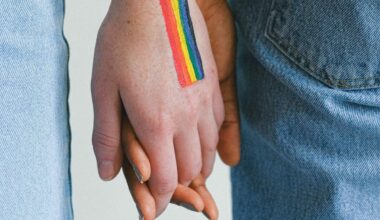While increased visibility may lead one to believe that these are newly formed identities, LGBTQ folks have existed throughout history, contributing mightily in all areas of our culture. Think of Oscar Wilde’s contribution to literature and the technological advances from Alan Turing. And just as perceptions and acceptance of LGBTQ communities — and the language we use to describe them — has evolved over time, so has the relationship between the mental health community and LGBTQ people.
An Abbreviated History of LGBTQ Treatment in Health & Medicine
It’s hard to talk about LGBTQ mental health throughout history without first understanding the belief systems of specific societies and the influence of governments. It’s believed that some areas deemed same sex attraction and overall queerness, as amoral prior to the 1500s. England enacted laws that criminalized same sex acts and any other sexual behavior that wasn’t for the sole purpose reproduction — called “crimes against nature.”
These sanctions were often passed down from criminal courts or religious entities. The sanctions led to the beginning of religious influence in legislatures, which impacted how the healthcare system viewed the LGBTQ community. Similar laws were brought to the thirteen colonies as the United States was formed.
LGBTQIA+ affirmative therapy can help.
Looking for a LGBTQIA+ affirmative therapist? Find an experienced therapist
How LGBTQ identity came to be designated as a mental illness
Depending on who you ask, the motivation for considering LGBTQ identities mental illnesses in the early days of psychology was either intentionally punitive or questionably benevolent. However, there were also those who believed that homosexuality (or overall queerness) was a disorder that could be effectively treated (altered) and therefore queer folks shouldn’t be punished for such “crimes against nature.”
Even if the treatment was in good faith (often times it wasn’t), the major problem was that treatment wasn’t effective, was most often non-consensual, and resulted in large swaths of the community being traumatized.
Conversion therapy changed the LGBTQ community’s relationship with medicine
The medical and psychiatric fields haven’t had the best relationship with the LGBTQ community over time, to say the least. The history of this abuse, for the most part, began with a practice that is still in operation today called conversion therapy.
Historically many gay or queer folks were subjected to medical experiments designed to help them acclimate to more normative gender and sexual identities. Gay men and lesbians were “treated” so that they would be more attracted to the opposite sex. People with divergent gender identities were tortured into changing their dress and mannerisms to fit into “polite society.” Many suffered at the hands of these treatments.
The research tells us that those exposed to conversion therapy at the hands of their parents (studies only done on minors at this point) contributes to higher rates of depression, suicide risk and less overall positive outcomes in life.
Effects of these treatments contribute to the LGBTQ community’s ongoing fear of medical providers, even more prevalent in people of color and those of lower social classes. As a therapist, it’s not uncommon for clients to come to me sharing their negative experiences with doctors or other therapists who weren’t affirming of their identities.
Removing homosexuality’s “disorder” designation
An LGBTQ-affirming perspective became more mainstream in the late 1960s and 1970s. During this time, activists and professionals in the field sought to remove homosexuality as a disorder in the widely used Diagnostic and Statistical Manual of Mental Disorders (DSM). These efforts led to homosexuality being removed in the book’s second edition in 1973.
The removal helped create a more accepting field, yet there are many who still believe that sexual orientation can be changed. A contentious legislative debate also still rages, with more states banning conversion therapy for minors due to limited effectiveness versus a high likelihood of harm.
Ongoing Conversations about Gender
Currently, the field of psychology is still contending with the diagnosis of Gender Dysphoria, which is relatively common among people who may identify as transgender, gender non-conforming, or genderqueer.
The World Health Organization has recently removed Gender Dysphoria from their list of mental disorders, as they believe the diagnosis reinforces cultural stigma. The condition remains as “gender incongruence,” a different diagnostic code now featured in the ICD’s reproductive health section, to ensure that individuals with this experience will still receive life-saving treatments.
The conversation about gender dysphoria will no doubt continue in the psychological community as well, with focus on making sure clients have access to care that can be both affirming and accessible.
Current Issues & The Path Forward
Due to issues around family, societal acceptance, and discrimination we see higher rates of mental health conditions, substance abuse, and suicide among those who identify as LGBTQ. LGBTQ+ identified adults are more than twice as likely than heterosexual adults to experience a mental health condition. This means a higher risk of suicidal ideation.
This is particularly true for queer people of color, especially black and latinx trans-women. As of June 2019, nine black trans-women have been killed across the United States. As you can imagine, the threat of ongoing violence negatively impacts the mental health and safety of trans-women of color and other queer folks worldwide.
That’s not to mention that hate crimes have been on the rise over the past several years. Queer folks of color — who live at the intersections of race, class, and sexuality or gender difference — are particularly vulnerable.
The constant threat of violence, combined with legally sanctioned discrimination in housing and employment makes the daily lives of LGBTQ folks more difficult. One of the best things that we can do to positively impact the mental health of the LGBTQ community is to become allies in the fight for safety and well-being for all LGBTQ folks, but especially queer people of color. Social acceptance of often marginalized communities can be a beacon of hope, signaling a better and safer future for all.
Community support can be an effective way to bolster the ongoing threats to LGBTQ folks. Therapy can be a safe space to cope with both discrimination and mental health issues in a safe environment.
Talkspace articles are written by experienced mental health-wellness contributors; they are grounded in scientific research and evidence-based practices. Articles are extensively reviewed by our team of clinical experts (therapists and psychiatrists of various specialties) to ensure content is accurate and on par with current industry standards.
Our goal at Talkspace is to provide the most up-to-date, valuable, and objective information on mental health-related topics in order to help readers make informed decisions.
Articles contain trusted third-party sources that are either directly linked to in the text or listed at the bottom to take readers directly to the source.




